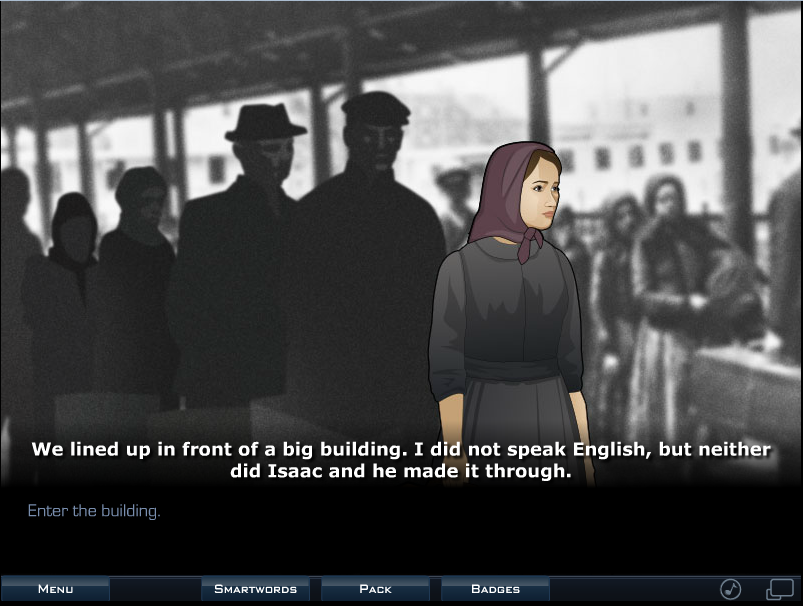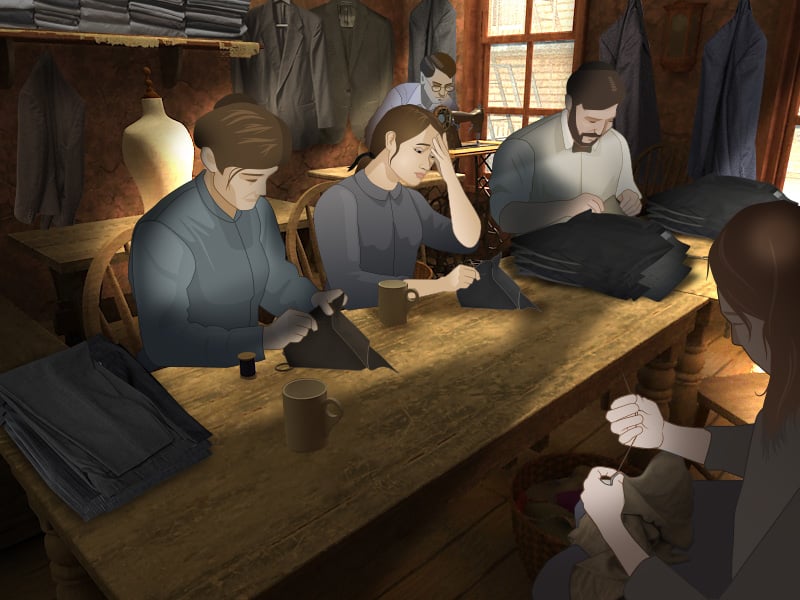About the game:
Mission US: City of Immigrants is part four in a series of standalone, point-and-click game episodes that offer students an interactive way to learn history by experiencing it “firsthand.”
How it works:
Students begin in the year 1907 as Lena Brodsky, a Jewish Russian teenager crossing the Atlantic Ocean into America. From the moment they arrive, students must make choices—how to act and what to say—that affect Lena’s life and future in small and big ways. These moments range from moving through customs to grocery shopping on an extremely tight budget, to whether or not she joins a worker’s strike at a clothing factory.

The game spans five parts, as well as a prologue and epilogue, and requires pointing and clicking in the browser. At certain points, students can move Lena across a 20th-century map of New York and learn about different historical locations, such as the Brooklyn Bridge. They’ll even engage in a few light “mini-games” (games within the game).
Students can earn badges and achievements depending on their choices in the game, which can lead them down different story paths, and also based on how much they explore. They can also collect “smartwords,” or vocabulary keywords, through careful observation and dialogue. These help to track individual student progress.
Educational value:
Mission US: City of Immigrants is complete with voice acting, which makes the experience more immersive and real. It’s an example of an “empathy” game, which seeks to deepen the player’s understanding of people’s lives in a certain time or place.
At this, City of Immigrants succeeds. Lena’s life is hard, and students will experience her hardships alongside her. She has little time of her own or pocket money to spend, for she must often put the needs of her family or the boarders in the apartment before her own. She works long hours in a sweatshop for little pay, and spends her “days off” washing and drying laundry by hand, shopping for groceries from street vendors that could charge too much or deliver subpar goods, and learning English at a Settlement House to secure a better future.

The game showcases the poor working and living conditions at the time, the struggles of immigrants, and new developments such as suffrage parades and worker unions. Though the story overall feels linear, the choices you make along the way make a difference, and players learn the consequences of their actions, good or bad. The most noteworthy emotional moment for me was when Lena discovers her brother, Isaac, has withdrawn all $50 from their bank account. This was a huge amount of money at the time, and because it pooled together incomes from many different people at the apartment, the impact and risk of losing that $50 felt very real and very frightening.
On the other hand, the few mini-games—such as a sewing game where players must rapidly press J, K, and L on the keyboard to maintain different meters—crammed in toward the end felt a little less impactful, but students should be able to suffer through them easily enough, and at least they break up the gameplay a bit.
In the classroom:
Mission US: City of Immigrants works best when played individually (with headphones) so that students can fully understand the results of their choices and carve their own path through the game. In total, the game requires about two hours of playtime and is ideal for middle school.
It also offers many opportunities for discussion (of the various “smartwords” and historical events), as well as reflection. Students can say what they liked and didn’t like about life in 1907, whether anything surprised them, and because the game includes branching story paths, they can compare their experience to other students’ in the class.
Additionally, the Mission US website features various class activities and resources for educators.
Fun factor:
Though Mission US: City of Immigrants is simplistic in nature, mostly involving point-and-click interactions, the storyline presents this historical time in an emotional way that will make the period more relatable to students.


